
Back in May, when the course was conducted Zaiton in green top beside her in white T is Francis (photo Catherine Lim)
A training course for tertiary student guides conducted by Raymond Goh, with one module by Lai Chee Kien, NUS Architecture Faculty who is also on the documentation team, took place over 2 half days In May . This is a report from the first tour conducted by 2″graduates” Francis Zhang and Zaiton Seah – our new and probably youngest brownies
1st July
The day of our inaugural tour!
Zaiton and I made it a point to get down to BBC early and we reached before 8.30am. The weather looked pretty good and the cloudy sky promised a cooling morning. We took the seats below the huge rain tree at the roundabout and put on our battle amour against the mosquitoes, while waiting for the tour participants to arrive.
By 9am, the majority of the participants had arrived so we made our way to the meeting place – the gates of BBC. We started the tour off by declaring that we were first-timers and that any lack of experience should be forgiven! Of course, this was unnecessary because the group turned out to be nice, attentive and patient people.
After the safety briefing, we set off toward the Group 1 (part of Hill 5) graves.
The three Group 1 graves we covered are:
Tay Koh Yat – owner of the largest bus operator in early 1940s (120 buses); leader of a 20,000-strong defence force during the war.
I took the opportunity to explain to the group regarding tomb design, including the different materials used to build a tomb and some of the fengshui involved.
Fang Shan – famous for being the oldest tomb in BBC (died in 1833).
Tan Cheng Siong – paternal grandmother of President Tony Tan was the third stop. We then continued to the Group 2 graves, which are coincidentally located at Hill 2. During the walk, Peter Pak, with his extensive knowledge in botanology (at least relative to us!), pointed out various beautiful flora to the tour participants.
We covered quite a few graves at Group 2:
Cheong Koon Seng – a famous Anglo-Chinese School alumnus who had a road named after him before a short trek uphill for one of the highlights in tomb design
Lee Kim Soo – the owner of Elkayes matchbox company and husband to five wives; his tomb, with art deco designs, is a mystery and wonder to behold.
Wee Chim Yean – Kapitan Cina of Bengkalis; even the plants and tree that partially cover his tomb cannot hide the beauty of the intricate carvings on this old tomb.
See Tiong Wah – one of the most important people buried at BBC. Without him and Tan Kheam Hock, who were both Municipal Commissioners, BBC would not have been opened to the wider Chinese community for burial.
Khoo Kay Hian – most famous as the founder of Kay Hian & Co, which merged with UOB Securities to form UOB Kay Hian.
Tan Yong Thian – the first producer of essential oil in South-east Asia, this individual is a fine example of entrepreneurship.
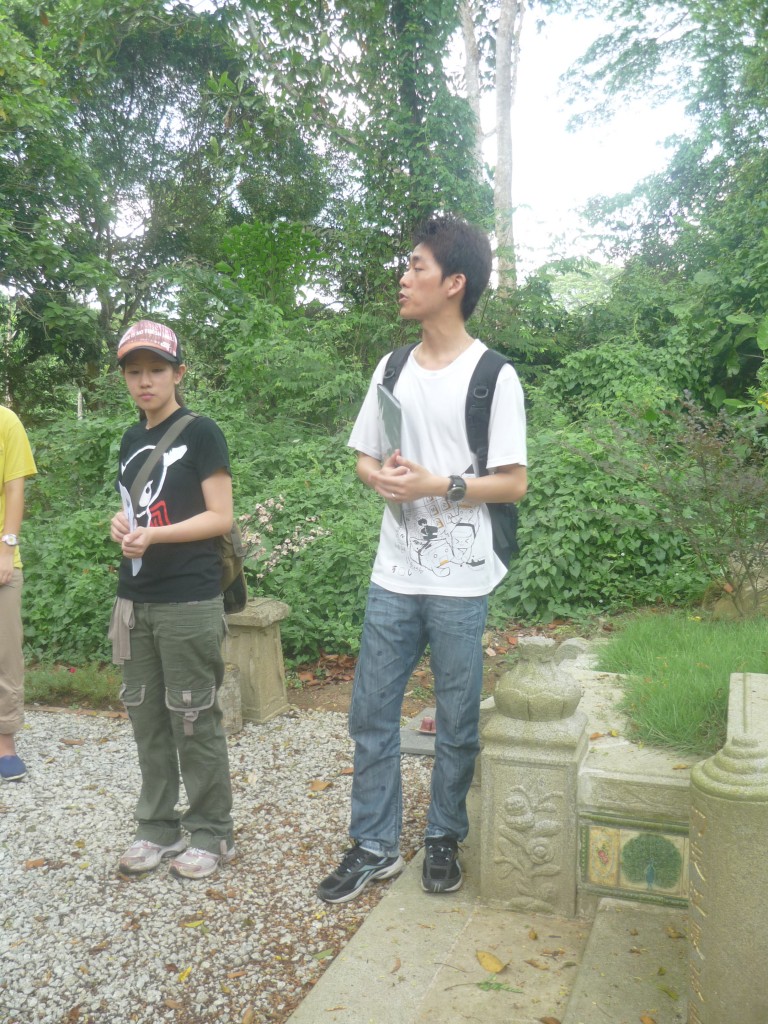
Zaiton and Francis recounting the life of an early entrepreneur who was an exception in private life with one wife (photo Catherine Lim)

Tan Yong Tians buried with his wife who died. He died within one month of his wife died. Their graves were restored last year by their granddaughter (photo Catherine Lim)
While heading back to the main road from Tan’s grave, it started to rain! Many of us got wet before we could pull out our umbrellas and one of the participants even slipped on some bricks and fell (fortunately she was not injured). After taking shelter under a big tree for five minutes, the rain, having exacted enough misfortune for the day, thinned and eventually stopped. We took the opportunity and marched on to the last stops of the day:
1830s cluster – a cluster of headstones depicting different reign years from Chinese emperors.
Teo Chin Chay – most famous for the two topless angels by his tomb!
With that, we finished the Group 2 graves. On the way back, Peter Pak took us on a detour and managed to cover some graves at the other side of Hill 5 (Groups 3 and 4). Zaiton and I concluded the tour with heartfelt appreciation flowing from both the participants and us. We then headed off to a much needed lunch!

In lieu of a group photo as “veterans” forgot to take one for the students at Tay Koh Tomb where the tour had started (photo Peter Pak)
Overall, we think that it has been a smooth and memorable tour. We are really grateful towards Peter and Catherine (proud veterans of the BBC community!), who helped us a lot and filled up the gaps whenever we left out something in our explanation. Most important of all, we really appreciate the participants taking time to come down on a Sunday morning (which is frequently best spent sleeping in) and giving us their utmost attention. Just as it takes two hands to clap, it takes both volunteering tour guides as well as tour participants to keep the spirit of the BBC community going. We look forward to our next tour!
Editors note: We understand Francis and Zaiton are planning their next tour weekend of 14th July. Do look out for it. And of course they passed with flying colours.
The Peranakan Trail was customised for the Peranakan Association and guided by Chew Keng Kiat, Peter Pak and Gan Su-lin. This report was documented and contributed by Gan Su-lin.

A group photo by which to remember the Peranakan Association of Singapore’s visit to Bukit Brown. They reported enjoying the learning journey and the Brownies had lots of fun too (photo Gan Su-lin)

Lovely overcast and breezy day for a guided visit. Today’s tour for the Peranakan Association of Singapore took in the graves of Peranakan pioneers who have left legacies through their own commercial, political, or social endeavours, or the efforts of the illustrious descendants they produced (photo Gan Su-lin)

First stop, Mrs Tan Cheng Siong, the grandmother of current President of Singapore, Tony Tan Keng Yam. (photo Gan Su-lin)

Visitors were particularly impressed by the tomb photo of Mrs Tan Cheng Siong; minimally degraded after many decades of weather exposure. (photo Gan Su-lin)

Brownie Peter Pak regaling the visitors with an explanation of tomb brickwork while waving sprigs of Piper sarmentosum and Murraya koenigii leaves used in Peranankan cooking . (photo Gan Su-lin)

One of the rewards of Brownie work is reuniting descendants with their long-lost forefathers. Cheong Koon Seng’s descendant in a quiet moment at the Koon Seng cluster of grave (photo Gan Su-lin)
More on Cheong Choon Seng here

Keng Kiat introduces the visitors to Tan Yong Thian, pioneering distiller of the essential oil, patchouli. They marveled at the tomb restoration work undertaken by grand-daughter, Brownie Tachi (大姐)Rosalind Tan. (photo Gan Su-lin)
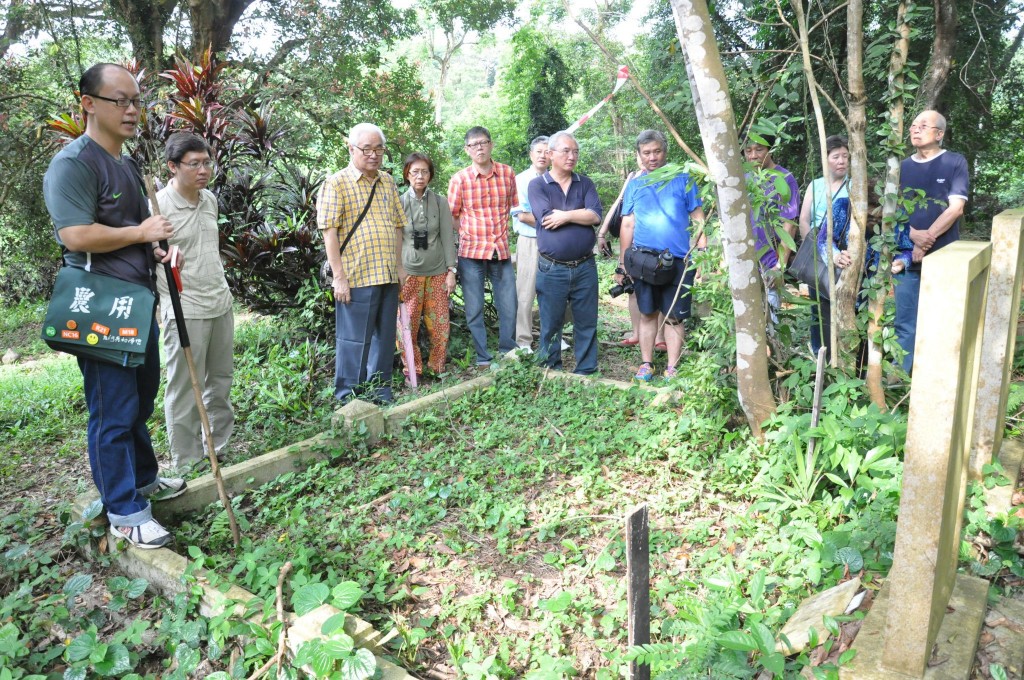
Visiting Khoo Kay Hian, pioneer stock broker was an opportunity to see first-hand a different grave design and style. (photo Gan Su-lin)

“If you look over there, you’ll see we’re now on a hill. You’re looking down the hill.” As it does with many visitors to BB, the intricate tomb carvings on the See Teong Wah cluster of tombs drew admiration and appreciation. (photo Gan Su-lin)

En route to visit Municipal Commissioner Tan Kheam Hock, after whom Kheam Hock Road is named. Another note was made of graves with re-buried (photo Gan Su-lin)
Find out more on Tan Kheam Hock here
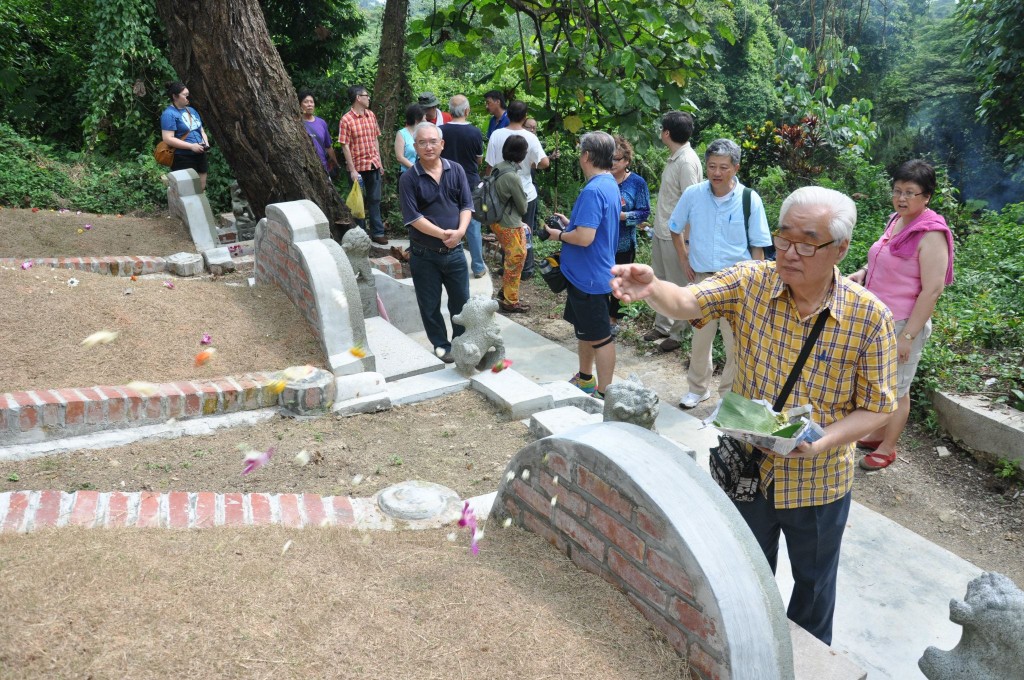
A visit was also made to the Tan Keong Saik quartet of tombs. In the foreground, Baba Peter Wee makes an offering of fragrant flowers onto the tomb mound of his grand-uncle, Tan Cheng Tit. (photo Gan Su-lin)

Peter gets cosy with the famous painted Sikh guard at Chew Geok Leong’s tomb. Lessons were learned about living tombs. (ohoto Gan Su-lin)
Find out more on what is a live tomb here

Brownies are always learning! Today, our Peranakan visitors helped us notice that Pang Cheng Yean’s double grave is flanked by that of his mother and of his wife’s mother. (photo Gan Su-lin)
Find out more on Pang Cheng Yean who was a pioneer banker here
Footnote: Customised tours on request can be considered for organisations at a suggested honorarium which goes to defraying expenses for outreach activities. Please email a.t.bukitbrown@gmail.com. All public tours are free of charge.
Dateline : 26 Tuesday 7-pm – 9.30pm
The Ngee Ann Kongsi auditorium of the sprawled out spanking new campus of University Town, NUS fills up. The event: “Moving House” jointly organised by NUS Museum and All Things Bukit Brown. The highlight: a timely resurrection of an award winning documentary by film maker Tan Pin Pin. “Moving House” made in 2001 which followed the Chew family , one of 55,000 Singapore families forced to relocate the remains of their relatives to a columbarium as grave sites made way for urban redevelopment. The screening was followed by a presentation by Dr Hui Yew Foong on the first exhumation documented at Bukit Brown on 3 June 2012 by his team which also included a video clip of present day descendants at the grave of their ancestors. It was a reprisal of a poignant scene from Pin Pin’s Moving House 11 years ago to the present which struck a chord with Judith Huang who was in the audience, and moved her to write in her blog about matters of national importance the morning after. We reproduce it here with her kind permission
Matters of National Importance
For most the glittering success of Singapore is like a mirage, can see but cannot touch. – a friend
I consider myself a patriotic Singaporean, and have been since I was a small child. Perhaps it is a quirk of my character, a function of being unusually enthusiastic about group identities, or perhaps I am just one of those people more susceptible to propaganda. I can’t be sure. But every morning, from the age of 7 through 18, when I recited the Singapore pledge, I meant every word of it (and still do). I still remember this feeling of national pride in progress – particularly economic and technological, that was thick in the air in the 80s and 90s. In particular, when I was in primary school, the object of national pride was the MRT (built in 1986) and Changi airport, both of which featured prominently in any national day poster we would draw for primary school art competitions. There was a sense that this infrastructure, as symbols of modernity and top-of-the-line technology, was part of a national effort to prove that Singapore had a future – or, rather, that Singapore was the future, and that we were all in this together.
The past 5 years saw massive changes in my country’s skyline, population makeup and politics, all of which I am grappling with as a returnee Singaporean. For me something changed when the casinos were opened. I’ve been down by Marina Bay quite a few times now, and I especially enjoyed the iLight festival, where this city really did seem like something out of a scifi movie set, only real. But there is something disconcerting about the fact that our most iconic building is not an opera house, not a national stadium, not a government building, but a casino which bars locals from entering, built for the cynical purpose of milking superrich foreigners to increase the GDP. Can someone who believes gambling is a vice really feel national pride in something like this? I know I feel distinctly uncomfortable when I look at those three slender columns and the ship-like sky garden linking them. Many of my friends from overseas have enjoyed the spectacular view from the top in the infinity pool, but something still restrains me from paying the $20 to enter the sky garden. Somehow, I don’t want my money to go to a company that makes money off other people’s misery and addiction, even if I’m not directly spending it in the casino.
In a week or so another spectacular national development will be unveiled – the supertrees, also in the Marina Bay area. I’m a little more enthusiastic about these, since they also appeal to my geeky side. The supertrees cost $1 billion, and are touted as an amazing man-made imitation of nature, a leap forward in ecological architecture. While I will definitely be checking them out, I can’t help but contrast the construction of the supertrees with the destruction of Bukit Brown, a natural secondary forest, rich in biodiversity, where human heritage and ecology mingle seamlessly.
While watching the screening of Tan Pin Pin’s documentary Moving House at NUS yesterday, I was hit viscerally by the high human cost of national development. The sight of aunties and uncles praying to their ancestors for forgiveness before plunging their hoes into their parents’ graves, the half-curious, half-fearful peering into the grave to see the blackened, shrunken bones of the loved ones they buried some twenty years ago, and the uneasy feeling that their ghosts may be unhappy at these developments were both difficult and fascinating to watch. I think we Singaporeans are no strangers to “sacrificing the small me to complete the big we” (牺牲小我,完成大我). The sort of boh-pian stoicism, the black humour in the “can’t be helped, government needs your land, sorry sorry” explanations offered to the ghosts, are all deeply familiar and endearing, resignation tinged with the tiny sting of resentment.
But the thing is, we are able to swallow this resentment as long as we see the point of the sacrifice. The danger comes when national development is seen to be benefiting not citizens as a whole, but a small, privileged group, which, furthermore, may not even be primarily Singaporean. Yes, the supertrees will be open to the public – the $1 billion is not going to finance a private garden. However, they are located in the Marina Bay CBD area, enhancing the million-dollar views of the skyscraping buildings and condos in that region, and I’m willing to bet that the average heartlander will probably not make the trip down to see them all that often. Bukit Brown, on the other hand, is a far more humble site, though occupying some pretty prime land (next to the exclusive Singapore Island Country Club). It is a sacred site for veneration of ancestors, a rich source of historical information as well as biodiversity. Furthermore, its destruction (and so, the loss of historical memory) is irreversible – it’s not as though we can simply transplant the gravestones somewhere, or preserve the material culture without destroying it.
The truth is that much of the frustration I sense from the people who have relocated, exhumed graves, or had their land repossessed for the sake of “national development” is that simply not enough information is given to explain why their sacrifices matter, and, crucially, what they (and people like them) are going to get out of it. In other words, the cost-benefit analysis, while a process transparent to policymakers, is largely opaque to those affected. Perhaps the average Singaporean would be more willing to relocate because an MRT station needs to be built, rather than a highway, since he may see the MRT as a more egalitarian infrastructure project compared with a highway that he associates with cars (which, due to the high cost of COEs, are out of the reach of most Singaporeans).
Funnily enough, I find that now I have returned, my sense of national pride has shifted from the nation-building projects to the amazing growth of civil society I’ve witnessed from afar in the last few years. I am amazed at the volunteer spirit of the “brownies”, the way they have set out to teach other Singaporeans about their heritage and history and ecology. While the building projects are monumental and aspirational, the movement to preserve Bukit Brown’s heritage is nostalgic and humble, but also noble in its insistence that every pioneer buried there matters, and offers a glimpse of life on this island as it once was, a piece of history that, once destroyed, represents a loss to all of us, because our own understanding of ourselves would be that much poorer. The narration of the past is just as important as the building of the future. We are not rootless creatures. Although our nation may be young, each of our family histories reaches as far back into time as anyone else’s, no matter what our nationality, and it is truly up to us to preserve or discard these pasts.
Whatever the outcome at Bukit Brown, what is remarkable about the movement that has sprung up around it is that dialogue has opened up in ways unimaginable just a few years ago. Although activists may say that the government has been unresponsive, and civil servants may be wringing their hands at the unexpected “trouble” activists have given them, the truth is that the level of dialogue and collaboration has far exceeded any other civil society case in recent memory, and this can only be a good thing, as the government learns how to communicate its plans and decision-making processes better, and civil society gains more experience and tools in making the wishes and aspirations of Singaporeans known.
After all, a sense of national identity needs to come from the citizens themselves, rooted in our culture and our history, because in our democratic society sovereignty rests with the citizens, and legitimacy rests with their elected representatives. It is our shared past and our shared future that makes us Singaporean, and if we don’t stand up to define it, no one else will.
Judith’s other pieces on Bukit Brown can be found here and this one was written after her first visit to Bukit Brown
by Gan Su-lin and Catherine Lim
The tomb staked 1888 or rather its companion is used as an illustration in the LTA sign boards at Bukit Brown to explain to the public how to look out for and identify whether an ancestor could be affected by the 8 lane highway that is going to be built through Bukit Brown.
The resident of Tomb 1888 was exhumed on Thursday 21 June 2012 by his descendant, a great grandson who has requested privacy of identity but was kind enough to allow Su-lin and me a chance to document and observe the exhumation from start to end.
On that day, we were told there were 4 exhumations and the following day, 11 were slated. We know this because exhumations has officialdom behind it. They have to be registered with NEA (National Environment Agency) which sends inspectors to spot check that it is conducted properly. There are papers to be signed and processed, but the tomb keepers are familiar with the procedure and cut out as much of the paper work as possible for the descendent. A note here to say that the companion tomb next to 1888 is not occupied which is not uncommon in Bukit Brown. The one beside it was most probably prepared for a spouse but who was not buried there for a variety reasons which we will not speculate on. The descendant was alerted to the existence of his great grandfather’s tomb only last year by Raymond Goh and proceeded to “refurbish” the tomb before news was released that the grave was affected by highway.
The exhumation of staked tomb 1888 started at 8 am with prayers and the digging started about 20 minutes later together with the separation of the tombstone from the backing which is necessary to release the spirit, a way of notifying the “resident”, he is moving house. The latter required the wielding of the mallet against stone which was heart wrenching to observe even for an outsider. The exhumation proved longer than the anticipated one hour because the grave was so well encrypted with granite slabs and brickwork and the coffin so well kept that it required a chainsaw to cut the opening. It was a “clean” exhumation, with remains of bones and nothing else.

Preparing to chant prays with incense, a bell and a dorje or vajra– ” thunderbolt” which is used in Tibetan Buddhism. The brown portfolio is an ipad which had been loaded up with the chants (photo Catherine Lim)
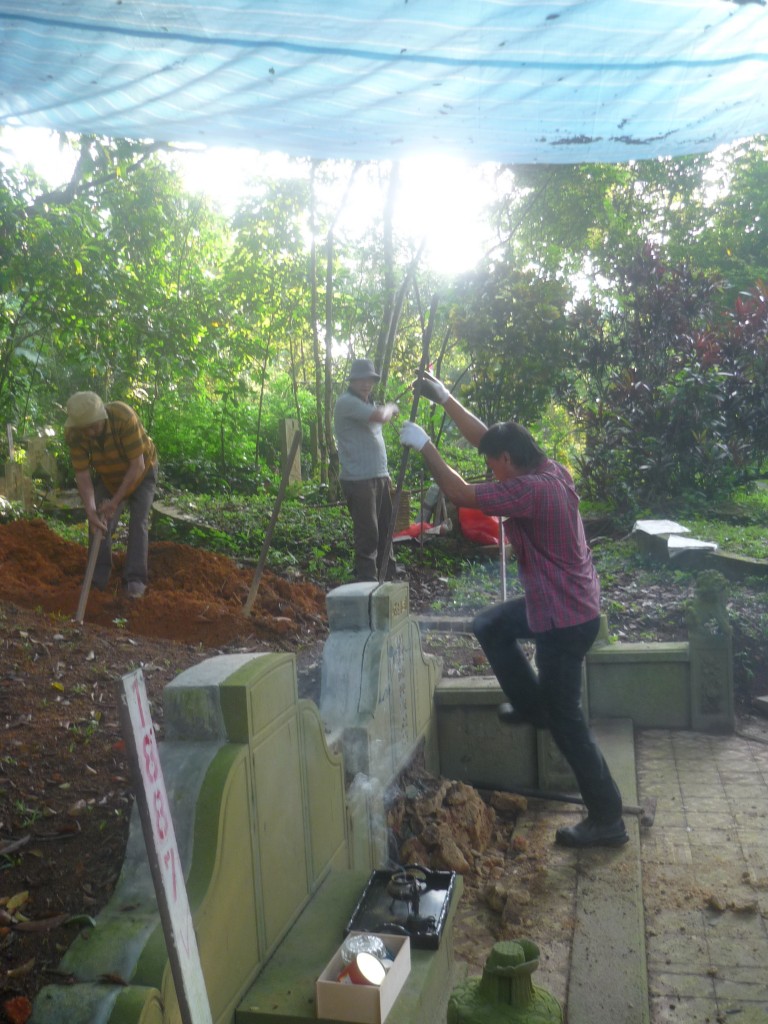
Separating the tombstone from the backing “releases the spirit” notifies the long time resident, he is moving home, the digging starts in tandem (photo Catherine Lim)

A valuable piece of inscription on the lives and times of the ancestor which is saved. (photo Catherine Lim)

Gan Su -lin (who documented) weighs in with Lim Ah Chye (tomb keeper) what to expect. (photo Catherine Lim)

Revealing the coffin, intact and impenetrable after more than 70 years and some excellent brick work that drew the admiration of the grave diggers (photo Gan S-lin)

The first yield is a termites nest which Su Lin picked up thinking it might be the discovery of truffles in Singapore ( photo Gan Su-lin)

The second yield, teacups which survived the long internment, duly collected and delivered to documentation team office (photo Gan Su-lin)

The exhumed ancestor must not be exposed to the sunlight.The use of the umbrella is symbolic and will shade the ancestor right up to the placement at the final resting place The remains were rinsed prior to transfer to crematorium with Chinese wine.(photo Gan Su-lin)

Ah Nan, who speaks fluent Hokkien presides over transfer of ashes to urn with the greatest of respect and meticulous attention ( photo Gan Su-lin)

One last look at the Crematorium before the ancestor was brought to the family temple (photo Catherine Lim)
The exhumation began at 8 am. The gravediggers reached the granite slabs an hour later. The remains were exhumed just after 10am and transported to the crematorium about 10.30. The remains were ready for collection at 11.30am. By 1 pm, the ancestor was” laid to rest” in the family temple.
“Moving House”
Tuesday 26th June 7 pm – 9 pm
University Town Auditorium in Kent Ridge
NUS Museum and All Things Bukit Brown presents “Moving House” – a screening, a presentation and a Q and A session on the next significant development for the planned 8 lane highway that will cut through the cemetery – Exhumation.
The documentation team led by Dr Hui Yew Foong undertook its first documentation of a private exhumation of a staked tomb affected by the highway earlier this month.
We take this opportunity to resurrect an award winning documentary by film maker Tan Pin Pin. “Moving House” made in 2001 looked at the Chew family , one of 55,000 Singapore families forced to relocate the remains of their relatives to a columbarium as gravesites made way for urban redevelopment. The picnic mood of the family outing to move the remains belies the sadness and confusion everyone feels. It was screened in December 2001.
11 years on what can be expected and what will be the impact on a fresh round exhumations anticipated for some 3,700 tombs to come as Bukit Brown makes way for an 8 lane highway.
The screening of the 22 minute “Moving House” will be followed by a presentation by Dr Hui on some insights from the first exhumation documented by his team.
A q & a will follow with Tan Pin Pin and Dr Hui plus we hope one mystery guest whom we are hoping to persuade to take questions, some one who has had hands- on experience with exhumations.
Do look out for registration details which will be made available by the end of this week.
This is a heads up to book the 26th June for this event. 200 spaces will be available on a first come first basis.
For an example of exhumation rituals, click here.
Date: 9 June Saturday
Time: 9am to 11.30 am
Meeting Place: At the entrance gates of Bukit Brown at Lorong Halwa .
We will be covering Hill 2 and 5 – the heavily staked area of the cemetery affected by the 8 lane highway and which also cuts through the most beautiful valley in Bukit Brown…. PLUS a bonus of Oon Chim Neo – the largest single occupant tomb, and in the same vicinity the recently exhumed tomb of Ong Seah Say – a member of the Tong Meng Hui – the band of men who supported Sun Yat Sen’s revolutionary cause. Guide Su Lin will share her experience of documenting his private exhumation. Your other Guide is Claire
Join them as they “usher” you around Bukit Brown, and introduce you to some notable pioneers who had made great contributions to Singapore in the first half of the 20th century, as well as common citizens with interesting and heart-warming stories to share. Many of them are affected by the 8-lane highway. We also discuss the historical context of their lives and times.
Do register interest by clicking join on the FB event page for Saturday
For information on how to get there and handy tips please visit
http://bukitbrown.com/
==========================
Date: 10 June Sunday
Time 9 am to 12 pm
Meeting Place: Under the large and beautiful, and possibly endangered, rain tree, at the Roundabout. After the main gate, go forward another twenty metres, to the right of the SLA office
Discover the who’s who of Hill 3 with Peter Pak. According to our API map, that would be groups 5, 6, 11 and 12. Peter’s emphasis will be group 6 area, in particular.He will be covering the largest tomb Ong Sam Leong. From there, heading down to Chew Boon Lay. We will also be visiting the beautiful Teochew tombs of Leow Chia Heng and Low Peng Soy.
Here’s a map :
http://bukitbrown.com/
Do register interest on the FB event page for Sunday
Registration:
Our weekend public tours are FREE …
Optimally the group size is 30 participants (15 individuals/guide).
==========================
General information:
The tour:
The Bukit Brown area is about 233 hectares in extent, bordered by Lornie Road, Thomson Road and the Pan-Island Expressway. It lies just to the south of the Central Catchment Forest, being separated from it by Lornie Road and includes Singapore’s only Chinese Municipal Cemetery. With more than 100,000 graves, Bukit Brown is also one of the largest Chinese cemeteries outside of China.
Don’t forget to bask in the peaceful surrounds, and also chat with your guides and make friends with other participants. We are amateurs and volunteers, but we are passionate and serious about what we do at Bukit Brown, and we encourage sharing of knowledge.
==========================
Please take note:
1. We will be walking mainly on paved roads. But there are hill treks so dress appropriately, especially your footwear.
2. Wear light breathable clothing. Long pants and long sleeves if you are prone to insect bites or sunburn. Bring sun block and natural insect repellent.
3. Wear comfortable non-slip shoes, as safety is important. Walking sticks are recommended.
4. Do read up on Bukit Brown before going so you have a better understanding of the place (e.g. BukitBrown.com)
5. Do bring water, light snacks, poncho/umbrella, sunhat and waterproof your electronics.
6. A towel around your neck is a necessary fashion statement at Bukit Brown.
7. Please go to the toilet before coming. There are NO facilities anywhere there or nearby.
==========================
How to get there by MRT / Bus:
Bus services available: 52, 74, 93, 157, 165, 852, 855.
From North: Go to Marymount MRT and walk to bus stop #53019 along Upper Thomson Road. Take Buses 52, 74, 165, 852, 855
Alight 6 stops later at bus stop, #41149, opposite Singapore Island Country Club (SICC), Adam Road. Walk towards Sime Road in the direction of Kheam Hock Road until you see Lorong Halwa.
From South: Go to Botanic Gardens MRT and walk to bus stop #41121 at Adam Road, in front of Singapore Bible College. Take Buses 74, 93, 157, 165, 852, 855. Alight 2 stops later at bus stop, #41141, just before Singapore Island Country Club (SICC), Adam Road. Cross the bridge, walk towards Sime Road; follow the road until you see Lorong Halwa.
By car:
Turn in from Lornie Road, to Sime Road. Then, turn left into Lorong Halwa.
Parking space available at the largish paved area near the cemetery gates.
Ever since they were “discovered” in early 2012 – when volunteer guides started to trail Raymond Goh on his missions to help descendents find ancestors in Bukit Brown – they have been a talking point.
Dubbed “Naked Angels” by I believe one among the community, we speculated on their genesis and gender. And sometimes wondered about the ancestry behind the double tomb which is also guarded by a pair of sikh guards.
No one had visited in a very long time. To visit the tomb means being subject to being bitten not just by mozzies but also the most vengeful ants to be found thus far, for having their territory disturbed.
But just two weeks ago, a family contacted Raymond Goh whom he believed were the family who “owned” the angels. The community was excited. An appointment was made with Raymond for Saturday May 12 th. The pair of cousins who turned up after lunch time that day were perhaps a little taken back by Raymond’s entourage of five. If there were, they took it in their stride. At least two of the volunteers were familiar to them as they had attended a guided a tour just the previous week.
Armed with their family tree, Raymond helped “reconnect” them their great grandfather and his 3 wives, and their grandfather who died during the Japanese war. A grand total of 5 tombs!

This is your great grandfather Teo Chin Chay buried together with his first wife Gan Chwee Sian who was China born and had bound feet (photo Catherine Lim)
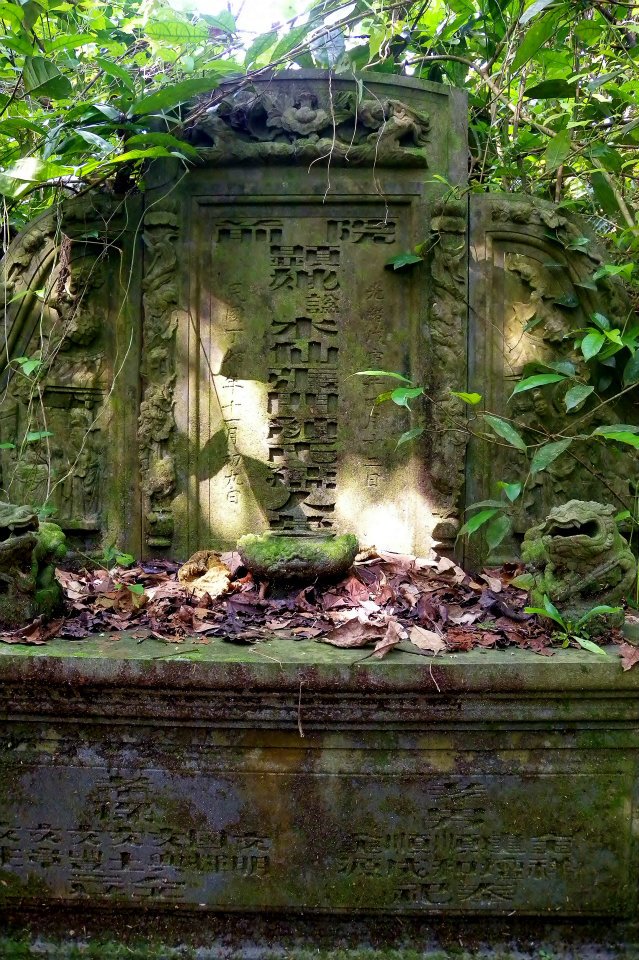
The inscriptions on the tomb stone are deeply carved and clear to read the names (photo Khoo Ee Hoon)

“Now let’s look for the other two wives. See the plot number again” with tomb keeper Lim in blue (photo Catherine Lim)

Raymond had already bounded up the other side of the hill and penetrated deep into the bush (photo Khoo Ee Hoon)
“It took me quite some time to find it, but I have now familiarized myself with the pauper divisions, so much so that the tombkeepers themselves ask my assistance if they encounter difficult to find tombs in pauper divisions. This one is in Blk 3 Div 11, in the depths of the forest.” Raymond Goh
So ends another fruitful afternoon for Khoo Ee Hoon, Peter Pak, Chew Keng Kiat with Raymond Goh. But we still don’t know much about how it came to be that a wealthy trader and businessman by the name of Teo Chin Chay came to have a pair of such unusual angels guarding his tomb. Could it be a Western take to Golden Boy and Jade Girl? The mystery continues.
Reported by Catherine Lim who was there but did not go bush bashing up the hill!
Saturday 26 May No Morning Tours
Instead an afternoon tour at 1600-1730 from the good people at Post Museum
“We would like to invite you to join us for OutPost 15: Intro to Bukit Brown this Saturday (26 May). It’ll be a lovely guided walk around the lush forested area “which is the resting place of 100,000 members of our pioneering generations. Email admin@post-museum.org to get one of the 15 spaces available”.
More information available here
Bukit Brown Tour on Sunday, 27 May 2012
09:00 until 12:00
|
Come for a leisurely stroll with our volunteer Guides: Peter and Keng Kiat (97903886), as they bring you around Bukit Brown, and introduce you to some notable pioneers who had made great contributions to Singapore in the first half of the 20th century. Many of them are affected by the 8-lane highway. We also discuss the historical context of their lives and times.
Date: 27 May, Sunday
Time: 9am to 12pm Meeting Place: Under the large and beautiful, and possibly endangered, rain tree, at the Roundabout. After the main gate, go forward another twenty metres, to the right of the SLA office For information on how to get there and handy tips please visit To register interest, please join this event on facebook here
========================== Registration: Our weekend public tours are FREE … Please click ‘Join’ on the FB event page to let us know you are coming, how many pax are turning up, or just meet us at the starting point at 9am. We meet there rain or shine. ========================== The tour: The Bukit Brown area is about 233 hectares in extent, bordered by Lornie Road, Thomson Road and the Pan-Island Expressway. It lies just to the south of the Central Catchment Forest, being separated from it by Lornie Road and includes Singapore’s only Chinese Municipal Cemetery. With more than 100,000 graves, Bukit Brown is also one of the largest Chinese cemeteries outside of China. We will start with a safety briefing and quick history and geography of the grounds. Don’t forget to bask in the peaceful surrounds, and also chat with your guides and make friends with other participants. We are amateurs and volunteers, but we are passionate and serious about what we do at Bukit Brown, and we encourage sharing of knowledge. Here is a map of the grounds: We will not cover Ong Sam Leong’s (the largest tomb), nor will we visit Chew Geok Leong (with the coloured Sikh Guards). However, if there is time and repeat visitors who already know the way, they could show you how to get there. ========================== Please take note: 1. We will be walking mainly on paved roads. But there are hill treks so dress appropriately, especially your footwear. 2. Wear light breathable clothing. Long pants and long sleeves if you are prone to insect bites or sunburn. Bring sun block and natural insect repellent. 3. Wear comfortable non-slip shoes, as safety is important. Walking sticks are recommended. 4. Do read up on Bukit Brown before going so you have a better understanding of the place (e.g. BukitBrown.com) 5. Do bring water, light snacks, poncho/umbrella, sunhat and waterproof your electronics. 6. A towel around your neck is a necessary fashion statement at Bukit Brown. 7. Please go to the toilet before coming. There are NO facilities anywhere there or nearby. ========================== How to get there by MRT / Bus: Bus services available: 52, 74, 93, 157, 165, 852, 855. From North: Go to Marymount MRT and walk to bus stop #53019 along Upper Thomson Road. Take Buses 52, 74, 165, 852, 855 From South: Go to Botanic Gardens MRT and walk to bus stop #41121 at Adam Road, in front of Singapore Bible College. Take Buses 74, 93, 157, 165, 852, 855. Alight 2 stops later at bus stop, #41141, just before Singapore Island Country Club (SICC), Adam Road. Cross the bridge, walk towards Sime Road; follow the road until you see Lorong Halwa. By car: |
This Wednesday, Dr. Lai Chee Kien will be sharing his findings during the course of his documentation work on Bukit Brown Cemetery.
We are not just talking about bricks and mortar, but the social, economic and cultural history that can be gleaned from tombstone materials and design from the 223 hectare cemetery with tombs going as far back as the early 1800s.
Department of Architecture,
National University of Singapore
16 May 2012 (Wednesday)
7pm – 9pm
NUS Museum
Free Admission
For more information, please register here
On Saturday the 19th May NLB and All Things Bukit Brown presents:
“Bridging Your Past with Your Present – Tracing your Family History”
Hear about the exciting twists and turns of tracing your roots. This talk will showcase the various ways people have discovered their family histories, through selective case studies of persons buried at the Bukit Brown Cemetery.
The presentation is anchored by tomb whisperer Raymond Goh who doggedly bush bashes every weekend with some members of the Bukit Brown community who have also come to find satisfaction in helping descendents connect to their ancestors. Sharing their personal experiences will be Norman Cho, Lim Su Min and Serene Tan – all have been helped by Raymond in one way or another to unravel their family tree. They will also share additional resources which have aided in their personal discoveries.
Interested participants may also register for a guided tour of Bukit Brown Cemetery.
Date: Saturday May 19, 2012
Time: 05:00 PM – 06:30 PM
Venue: Level 5 – Possibility in National Library Building
Lang: English
Note: Registration is required without payment.
Fees: Free for 1 seat(s)
Please register here
The Guiding Guides Tour By Raymond Goh
Date: Saturday 19 May
Time: 8.30am – 11.30am
We are opening up to the public just 10 places to join a training tour conducted by Raymond for out student volunteers. The route covers the most “staked” area in Bukit Brown, Blocks 5 and 2 and pass the beautiful valley where the highway bridge will traverse. It starts off with the largest single tomb located off Kheam Hock Road belonging to Oon Chim Neo, stake number 77. Please meet for this tour outside the gates at the junction of Lorong Halwa and Kheam Hock.
For information on how to get there and handy tips please visit
http://bukitbrown.com/
Registration:
Please click ‘Join’ on this FB event page We meet rain or shine. For more information on getting there, please scroll down page for more details.
Time: 8.30am to 12pm
Date: 20 May, Sunday
Time: 8.30am to 12pm
Meeting Place: Under the large and beautiful, and possibly endangered, rain tree, at the Roundabout. After the main gate, go ahead another twenty metres, to the right of the SLA office
For information on how to get there and handy tips please visit
http://bukitbrown.com/
==========================
Registration:
Our weekend public tours are FREE …
Optimally the group size is 30 participants (15 individuals/guide).
Please click ‘Join’ on this FB event page to let us know you are coming, how many pax are turning up, or just meet us at the starting point at 9am. We meet there rain or shine.
==========================
The tour:
The Bukit Brown area is about 233 hectares in extent, bordered by Lornie Road, Thomson Road and the Pan-Island Expressway. It lies just to the south of the Central Catchment Forest, being separated from it by Lornie Road and includes Singapore’s only Chinese Municipal Cemetery. With more than 100,000 graves, Bukit Brown is also one of the largest Chinese cemeteries outside of China.
We will start with a safety briefing and quick history and geography of the grounds, and share with you the story of a man with a duo identity …
We will take a leisure climb to pay respect to a school founder, as the actual school teachers and students had recently done so …
We then take a side track and visit one of the important founders of Bukit Brown, who thankfully is not affected by the proposed highway …
Another arduous climb, and we will drop in on three neighbours from Semarang (Central Java) …
No visit to Bukit Brown is complete without visiting the biggest tomb there, as well as the famous coloured Sikh Guards …
And there are more, if you can keep up with us …
Don’t forget to bask in the peaceful surrounds, and also chat with your guides and make friends with other participants. We are amateurs and volunteers, but we are passionate and serious about what we do at Bukit Brown, and we encourage sharing of knowledge.
Here is a map of the grounds:
http://bukitbrown.com/
We will be covering several pioneers in groups 5, 6, 11 and 12.
==========================
Please take note:
1. We will be walking mainly on paved roads. But there are hill treks so dress appropriately, especially your footwear.
2. Wear light breathable clothing. Long pants and long sleeves if you are prone to insect bites or sunburn. Bring sunblock and natural insect repellent.
3. Wear comfortable non-slip shoes as safety is important. Walking sticks are recommended.
4. Do read up on Bukit Brown before going so you have a better understanding of the place (e.g. BukitBrown.com)
5. Do bring water, light snacks, poncho/umbrella, sunhat and waterproof your electronics.
6. Please go to the toilet before coming. There are NO facilities anywhere there or nearby.
==========================
How to get there by MRT / Bus:
Bus services available: 52, 74, 93, 157, 165, 852, 855.
From North: Go to Marymount MRT and walk to bus-stop #53019 along Upper Thomson Road. Take Buses 52, 74, 165, 852, 855
Alight 6 stops later at bus-stop, #41149, opposite Singapore Island Country Club (SICC), Adam Road. Walk towards Sime Road in the direction of Kheam Hock Road until you see Lorong Halwa.
From South: Go to Botanic Gardens MRT and walk to bus-stop #41121 at Adam Road, in front of Singapore Bible College. Take Buses 74, 93, 157, 165, 852, 855. Alight 2 stops later at bus-stop, #41141, just before Singapore Island Country Club (SICC), Adam Road. Cross the bridge, walk towards Sime Road, follow the road until you see Lorong Halwa.
By car:
Turn in from Lornie Road, to Sime Road. Then, turn left into Lorong Halwa.
Parking space available at the largish paved area near the cemetery gates.







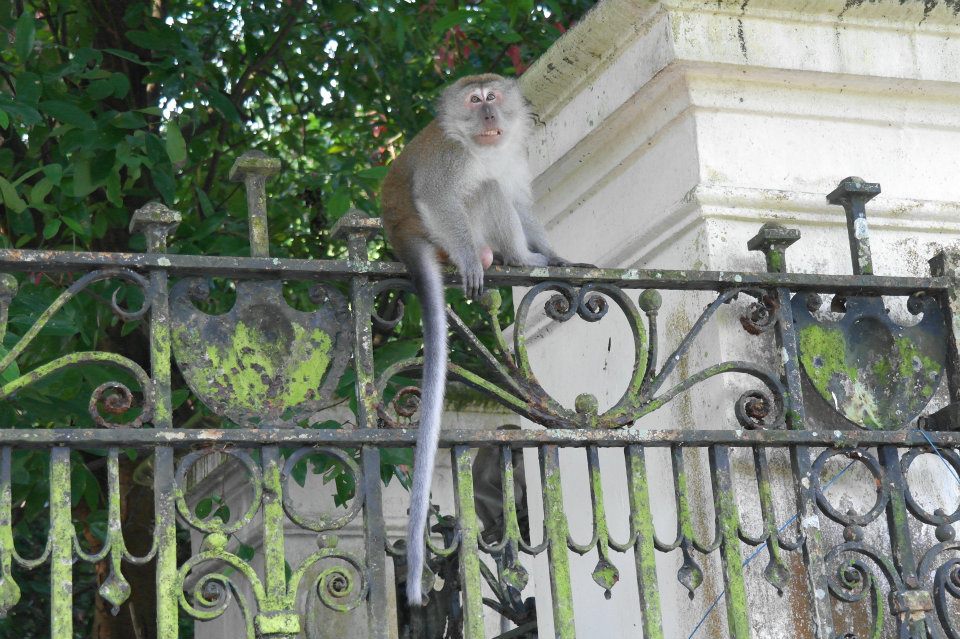


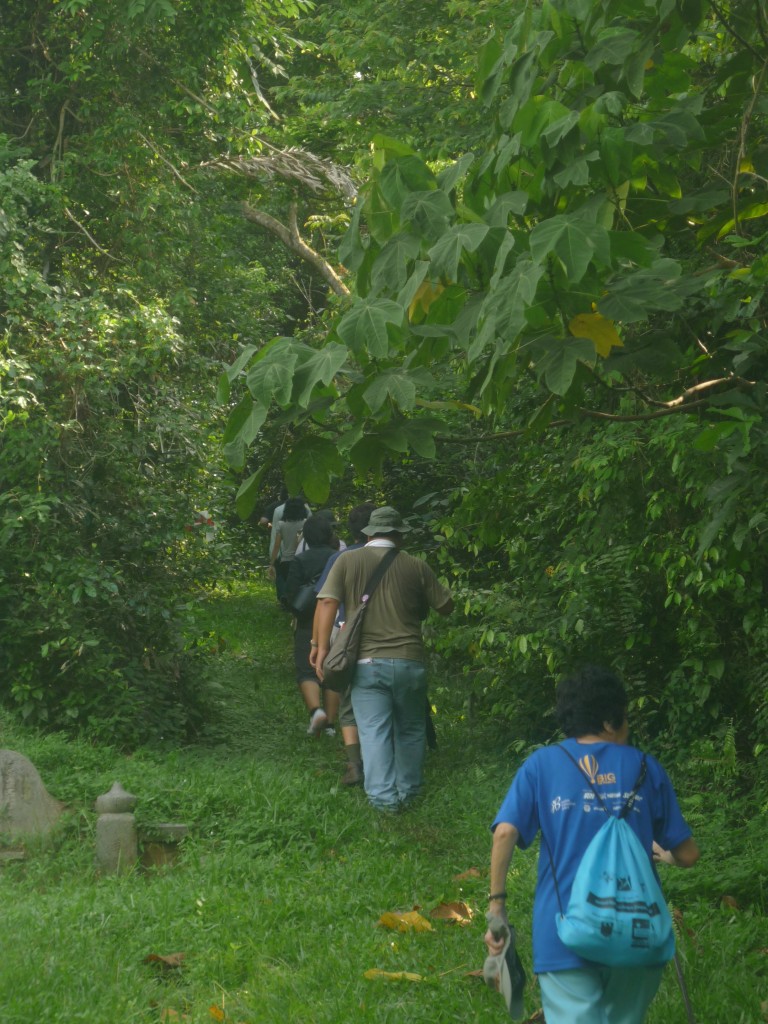

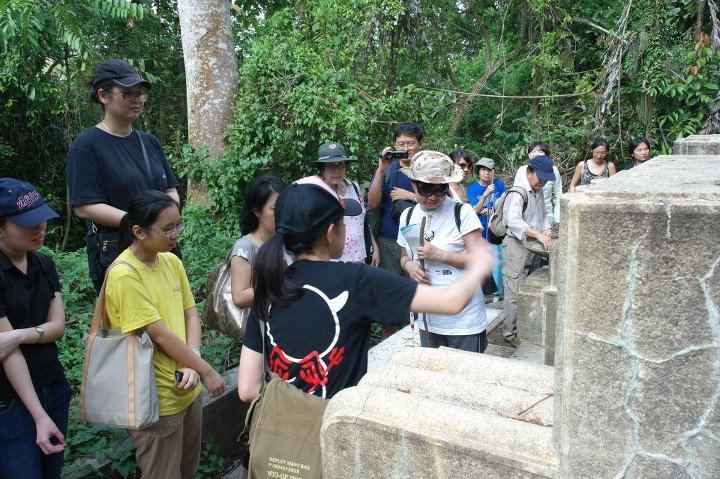


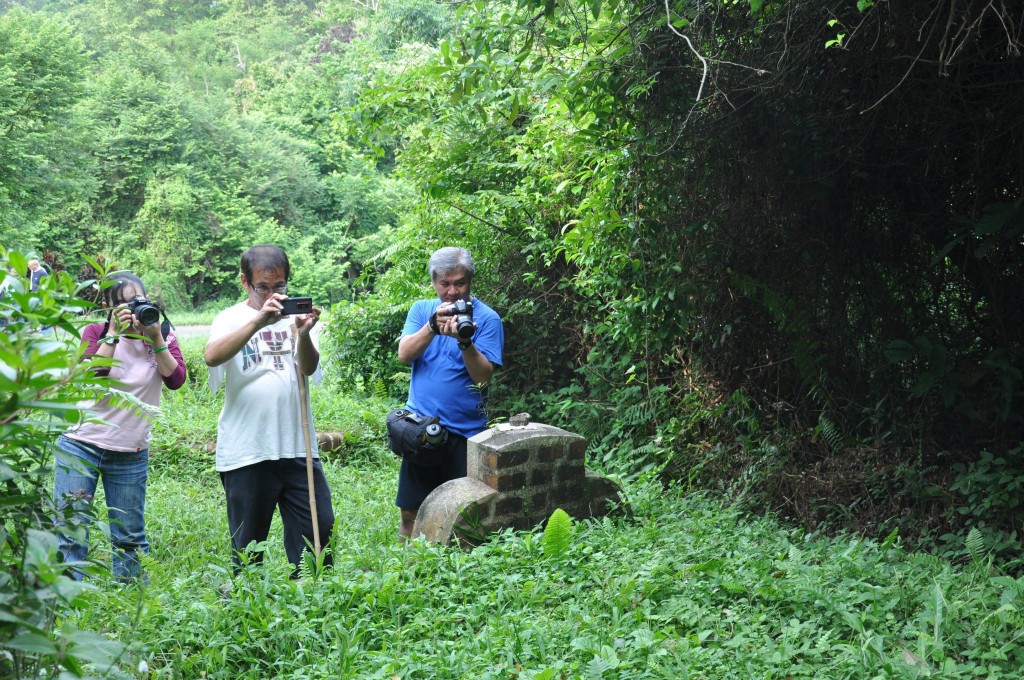
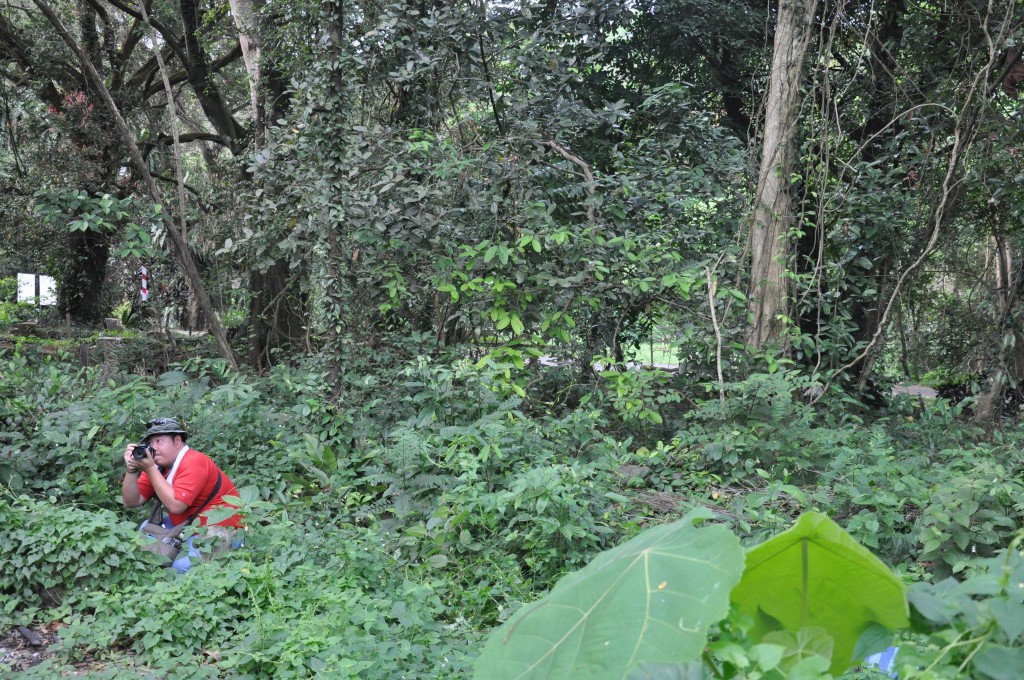
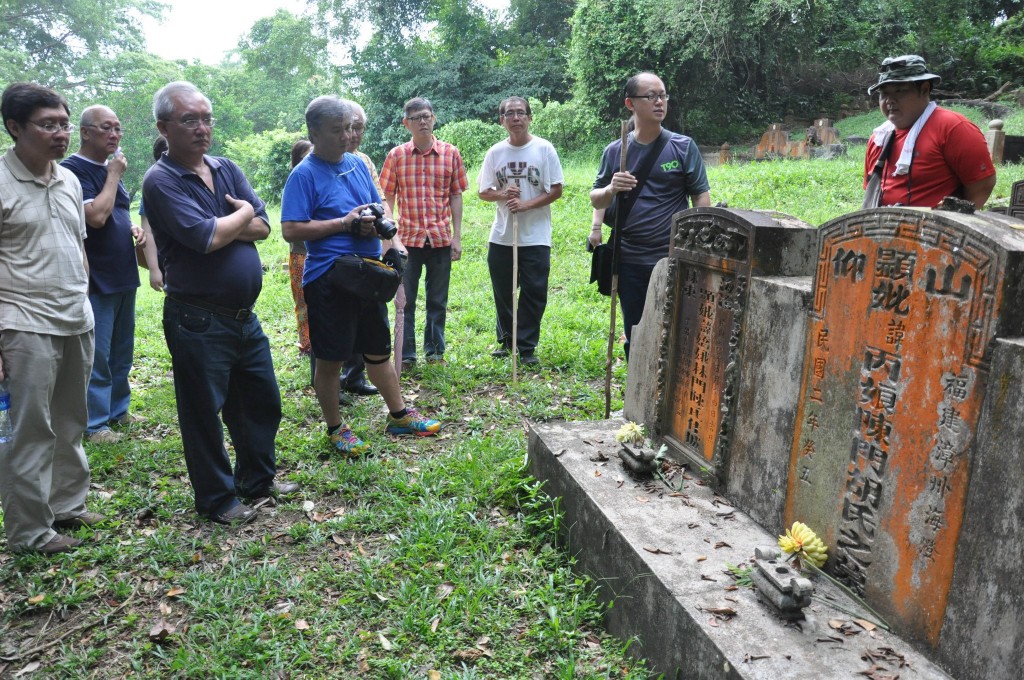











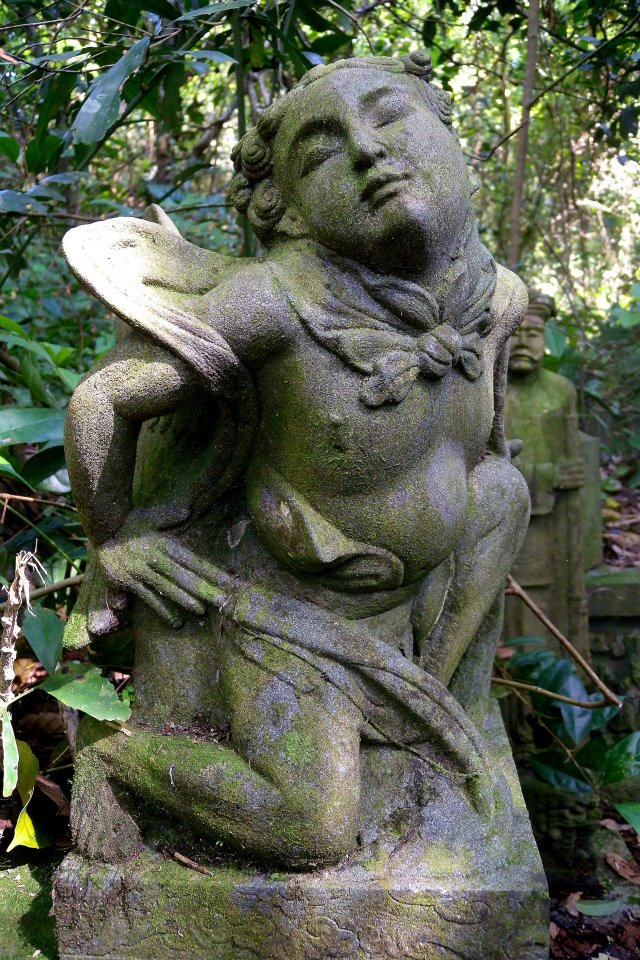
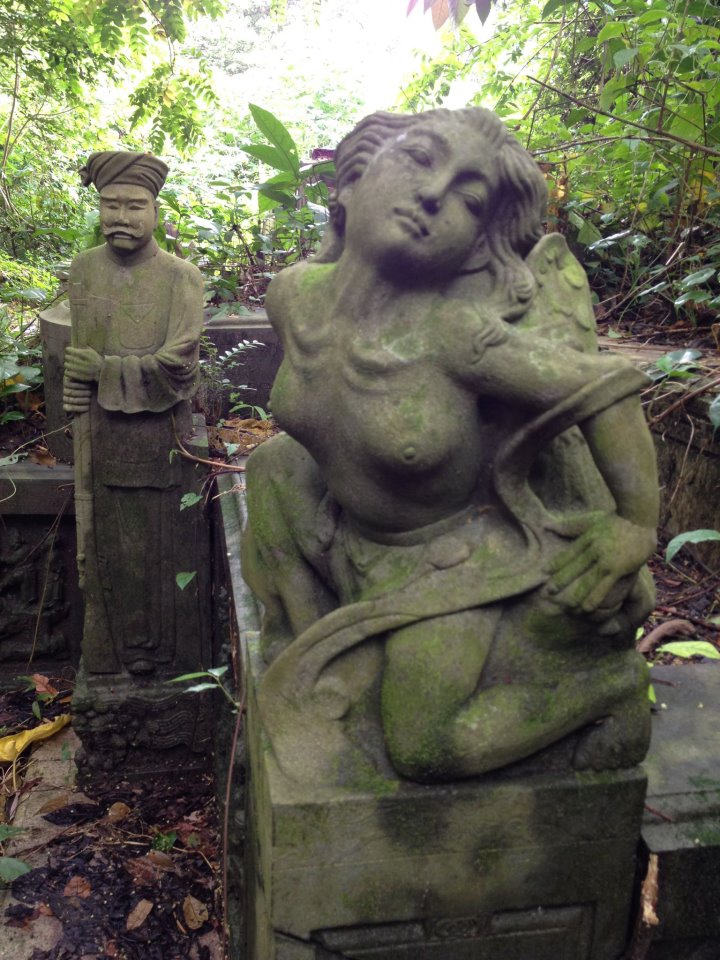











Recent Comments